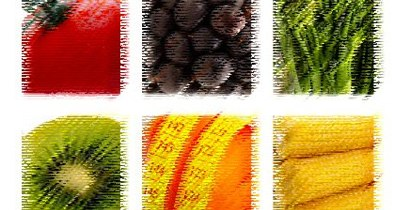Nutritional Therapist, Rachel Dowler, blogs for us on the subject of nutrition for mums and our families.

Simple changes that can make a big difference
Are you struggling to keep up with your New Years diet? New diet and healthy eating plans can feel completely overwhelming and we often set ourselves up to fail by setting the goals too high. Sometimes all that is needed are a few small changes to your current routine. Here are 10 things you can do to break habits you never knew you had.
1.Always menu plan for the next day. It’s so much easier to succeed if you know exactly what you’re going to eat and you’ve got it ready.
2.Make a shopping list. Go to the supermarket prepared and only buy what you need. Always eat before you go, otherwise it’ll be harder to resist the temptation of sugary foods.
3.Always sit down to eat and preferably at a table. Mindless eating in front of a tv means we often miss our ‘full up’ signal and this can lead to over eating.
4.Chew thoroughly. Chewing releases digestive enzymes, which help improve our overall digestive function. Studies show, those who chew each mouthful thoroughly, often consume less calories.
5.Drink more water and reduce your calories. Drinking between one and two litres a day helps to keep us hydrated. Often what you think are hunger cues are actually thirst. By replacing tea, coffee and fizzy drinks with water or herbal teas you will be reducing your calorie intake.
6.Reduce your alcohol. Be aware of how often you are drinking. It’s all to easy to reach for the wine in the evening and this can soon become a habit. Try to have at least 2 alcohol free days a week.
7.Look at your portion sizes. It’s all too easy to pile our plates high. The ideal plate ratio is 1/4 protein, 1/4 carbs and 1/2 vegetables. If you are trying to lose weight then try to use smaller plates.
8.Try to leave a little on your plate. Often we have been taught from a young age not to leave anything on our plate. This can lead us to eat just for the sake of it and not because we are hungry.
9.Try to vary your foods as much as possible. Most people have about 20 recipes they use regularly. Try to learn a new recipe every month and include foods you’ve never tried before.
Always eat a good breakfast. It’s important to ‘break’ the ‘fast’ and balance your blood sugar levels. Eating eggs for breakfast has been shown to reduce craving
Healthy snacks for kids - and parents too!
There’s so much emphasis on preventing childhood obesity these days and rightly so. Good nutrition starts in childhood and encouraging your child to make healthy choices from a young age could set them up with a healthy attitude to food for life.
It’s all too easy to offer our kids biscuits, crisps and cakes as an after school snack. These foods are laden with sugar, salt and fats but are sold to us with misleading labels such as ‘fat free’ (but high sugar) or ‘low sugar’ (but high fat or salt content), so always read the labels thoroughly. Drinks can also be a problem. Many fruit flavoured drinks can look fine but when you read the labels are loaded with sugar or sweeteners.
Children do need snacks, as they are always active and constantly growing. They need the nutrients for growth and development but it’s important to choose healthy, nutritious and vitamin-laden snacks.
Some ideas:
Chopped fruits: Apples, pears, strawberries, pineapples, kiwi, tangerine, banana, mango, peach, grapes etc
These can be eaten on their own or you could make fruit kebabs and use a small pot of low sugar or natural yoghurt for dipping. Or make a chocolate fondue dip using natural yoghurt, melted dark chocolate, maple syrup and vanilla essence.
Chopped vegetables: carrots, peppers, cherry tomatoes, cucumber etc.
Again these can be eaten alone but also with dips such as hummus, tzatziki, salsa or guacamole, or soft cheese.
Mini wholemeal pittas or oatcakes are also ideal with dips. Oatcakes are very versatile with a variety of toppings and come in several flavours now. Make them more fun by using the toppings to make funny faces.
Instead of biscuits, why not offer them a fruit bar (available in most supermarkets, near the wholefood section). There are many different flavours including chocolate, berry, pecan etc, The company that makes oatcakes also make sweet versions, available in choc chip, berry and ginger. These are much lower GI than your average biscuit.
Yoghurts are a brilliant source of calcium and can be included in your child’s diet every day but beware those loaded with added sugars. The healthiest choice would be natural yoghurt with added fruit and a drizzle of honey for sweetness. If your children prefer flavoured yoghurts then opt for the organic ones as they have less ingredients added to them. You can also get organic yoghurts in tubes for the lunchbox.
Dried fruit still contains nutrients but can be high in natural sugars so limit to a handful per serving.
Raisins are a good choice but also try:
Dried bananas
Dried apples
Dried mangos
Dried pineapple
Dried apricots (opt for the brown ones as they haven’t had preservative added).
Nuts and seeds are highly nutritious. Pumpkin and sunflower seeds can be eaten on their own or can be added to fruit or yoghurt as can nuts. Nuts are safe for older children providing thee is no history of allergy.
Homemade popcorn (without salt or sugar) is fun to make, and makes a great alternative to a bag of crisps.
Instead of ice cream why not make your own with yoghurt. Using 400ml of natural yoghurt and 2 frozen bananas (1 per person), whizz up in a blender and serve immediately. Add berries, nuts or seeds to taste.
Healthy eating tips for busy parents.
When you’re a busy parent having a few fast yet healthy ideas to feed your family is a must. A few staple ingredients in your freezer, fridge or store cupboard could help you create a wholesome family meal in minutes.
Top five tips for time saving meals:
Menu planning is so important. It saves both time and money, as you’ll know exactly what to buy when you go shopping. If you know you’ll only have 15 minutes to prepare a meal for everyone then plan accordingly. A green pasta is very quick and easy. Frozen green veg, pasta, some green pesto sauce with a little grated cheese on top can be made in minutes. Omelettes are a quick and healthy option adding as many vegetables as you like. Alternatively, prepare something the night before that can be easily reheated.
Batch cooking is a must when making sauces or soups. It’s an economical and time saving way to have a healthy meal at the ready. Just double up on all the ingredients and freeze half for another day. Having a stew, a soup, or pasta sauce in the freezer can mean you can have a substantial meal made in no time at all. Always defrost thoroughly and reheat until piping hot.
Multi task: This is something we are used to doing all the time. Whilst dinner is cooking use the time to prepare the kids lunches, and why not prepare you a healthy lunch at the same time.
Choose wisely: If you are relying on shop bought lunches, check the labels. Choose those with lower saturated fat content. Always opt for wholegrain bread and include some protein with your lunch as this will help to keep you fuller for longer. Try to avoid mayonnaise and dressings as these can be laden with fat. Why not buy a basic salad and add a tin of tuna, mackerel or sardines, or eat with some whole meal pitta bread and hummus.
Staple foods: Always keep some healthy foods to hand. Try to keep wholegrain rice, wholegrain pasta and whole meal bread in your store cupboard. Keeping frozen veg in the freezer is also essential. Frozen vegetables are healthy and can be added to almost any meal.
For more nutrition advice, contact Rachel Dowler at The Chiltern Health Centre on 0208 661 1613.
